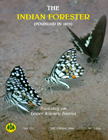Fragmentation and Plant Diversity Status of Major Forest Types in Meghalaya, North-East India
DOI:
https://doi.org/10.36808/if/2006/v132i12/4303Abstract
The varied physiography, soil and climatic conditions are responsible for the development of sub-tropical evergreen, sub-tropical semi-evergreen, broad-leaved, sal and sub-tropical pine forests in the State of Meghalaya. The sub-tropical evergreen, semi-evergreen, and broad leaved forests are very rich in tree as well as other plant species as compared to sal and pine forests. Biotic factor, particularly human interference in the form of shifting agriculture, timber extraction and fuelwood collection, and to a lesser extent, cattle grazing have accelerated the fragmentation process of these forests, except at few places where continuous forest patch exceeds 50 km2 area. Fragmentation of the forest may have serious consequences on species composition and community structure of trees in the forest communities of the state. This study shows that all of them are highly disturbed as is evident from high frequency of smallsize patches. Pine forests are most disturbed. An obvious approach to conserve plant biodiversity would be to map distribution pattern and determine concentration of biodiversity and endemic species in the forest fragments.Downloads
Download data is not yet available.
Downloads
Published
2006-12-01
How to Cite
Tripathi, O. P., Pandey, H. N., & Tripathi, R. S. (2006). Fragmentation and Plant Diversity Status of Major Forest Types in Meghalaya, North-East India. Indian Forester, 132(12), 1598–1608. https://doi.org/10.36808/if/2006/v132i12/4303
Issue
Section
Articles
License
Unless otherwise stated, copyright or similar rights in all materials presented on the site, including graphical images, are owned by Indian Forester.





